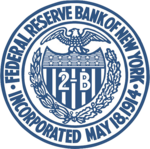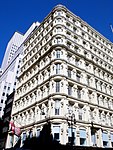Theatre on Nassau Street
1732 establishments in New York1758 disestablishments in New YorkBuildings and structures demolished in 1765Demolished buildings and structures in ManhattanDemolished theatres in New York City ... and 4 more
Financial District, ManhattanFormer theatres in ManhattanTheatres completed in 1732United States theater (structure) stubs
The Theatre on Nassau Street, or The New Theatre, was probably the first purpose-built theatre in Manhattan.
Excerpt from the Wikipedia article Theatre on Nassau Street (License: CC BY-SA 3.0, Authors).Theatre on Nassau Street
Maiden Lane, New York Manhattan
Geographical coordinates (GPS) Address Nearby Places Show on map
Geographical coordinates (GPS)
| Latitude | Longitude |
|---|---|
| N 40.709166666667 ° | E -74.008333333333 ° |
Address
33 Maiden Lane
Maiden Lane
10038 New York, Manhattan
New York, United States
Open on Google Maps











